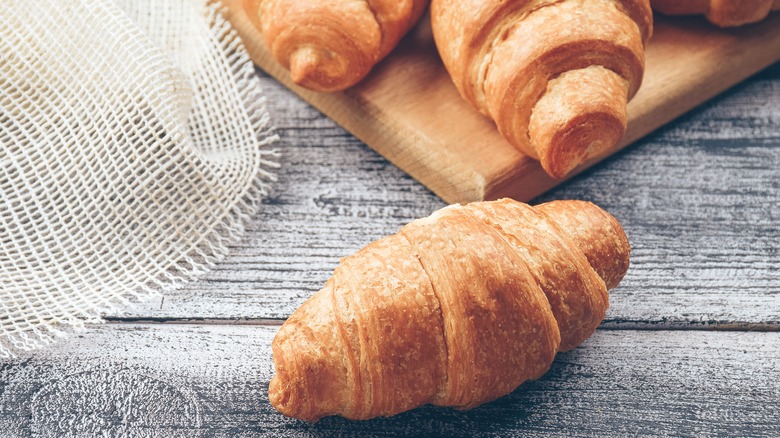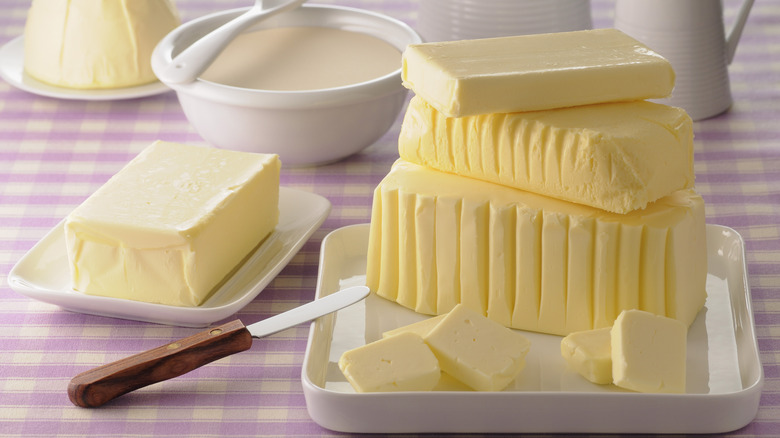The Ingredient That Matters Most When Making Homemade Croissants
Home bakers live for everything sugar, butter, and flour-related. They are the ones creating cake masterpieces, sensational cookies, and Instagram-worthy breads. And they are definitely the people you want to be friends with. While it seems that they can take on any type of dough or batter with relative ease, many of these home bakers remain intimidated by one chic pastry: the mighty croissant. While they (and the rest of the world) love to eat them, croissants have an air of sophistication and perfection that seems to scream, "Leave moi to the professionals," from behind their bakery's glistening display glass.
A croissant recipe uses words like "layers" and "lamination" and sometimes the ingredients are listed in weights not cups (eek!). All of this can be scary, but in reality, making homemade croissants comes down to patience, practice, and the right ingredients. The unique, distinctive flavor from a great croissant comes from only a handful of ingredients so it's important that each item is of the utmost quality. Sure, it might cost you a few extra dollars but if you're going to take the time and you have the determination to tackle making croissants, why wouldn't you go all out for it?
This is particularly true for one certain ingredient that will make the difference between creating a good croissant and an unforgettable one.
You butter believe it
In a standard croissant recipe, dough is rolled out and topped with a large, flat rectangle of butter. The dough and butter are then taken through lamination, or a series of folds which give croissants their signature layers. The butter to dough ratio is very high, therefore, it is imperative that the best quality butter is used. Obviously, this is for flavor. But a good butter plays many other roles in the creation of croissants. MasterClass notes that a good butter is "like clay" in that it is easier to fold and manipulate into your desired shape, a crucial step with croissants. And the butterfat also works on the exterior, making the outside layers brown and crisp, explains Food & Wine.
Food & Wine further explains that when the croissants bake, the water in the butter turns to steam, making the pastry puff and expand. And when the steam has dissipated, the croissant is left with lovely air pockets and soft interior.
But if there is too much water in the butter, the croissant's texture will be like bread. So, Good Things Baking recommends using a high quality, European butter, which tends to have less water content and more fat than American butters. And Chesterfield Observer advises you to be sure your butter is unsalted, as you want to be the one to control the salt content.

